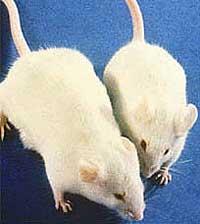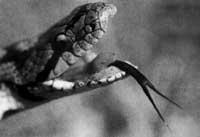Human behavior and pheromones
2000/12/01 Elhuyar Zientzia Iturria: Elhuyar aldizkaria
Feromón displacements are essential for the sits or mice to coordinate group behaviors. As well as telephone communications for the human being.
Pheromones are molecules produced by animals. They are distributed through the atmosphere and collected by another animal of the same species, often many kilometers away, causing in this receptor physiological and/or behavioral responses. These small molecules, like aromatic compounds, are considered to be associated with the specific protein receptors of sensory neurons present in the nostril. In any case, pheromone receptor neurons (present in the organ called "bomeronasal") do not directly send the information to the cortex, unlike odour receptor neurons, located in the olfactory organ. Consequently, basic behaviors such as sexual interest are unconsciously implemented. In other words, we don't even smell that it really happens. All this if you are a mouse.
So far, when it comes to the activity of human pheromones, only those who synchronized ovulation were known (the presence and presence of this pheromone in women's rooms has long been known). Bomeronasal receptors, such as the V1r, which were first isolated were rodents. The first "candidate" who can now be the recipient of the human pheromone, called V1RL1 (based on "V1r-like gene"), has been identified. Seven others similar to V1r have been identified in humans, but they have seen that they are not functional (pseudogens), so they are signs of a greater use of pheromones by our ancestors. What in humans is equivalent to the bomeronasal organ only appears in a part of embryogenesis and appears to be also a non-functional trace of our origin.
Pheromones, like rabbits and pigs, are collected by man through the olfactory organ. In any case, the discovery of this receptor potential can be one of the steps to explain the molecular cause of our basic behaviors.

Gai honi buruzko eduki gehiago
Elhuyarrek garatutako teknologia





